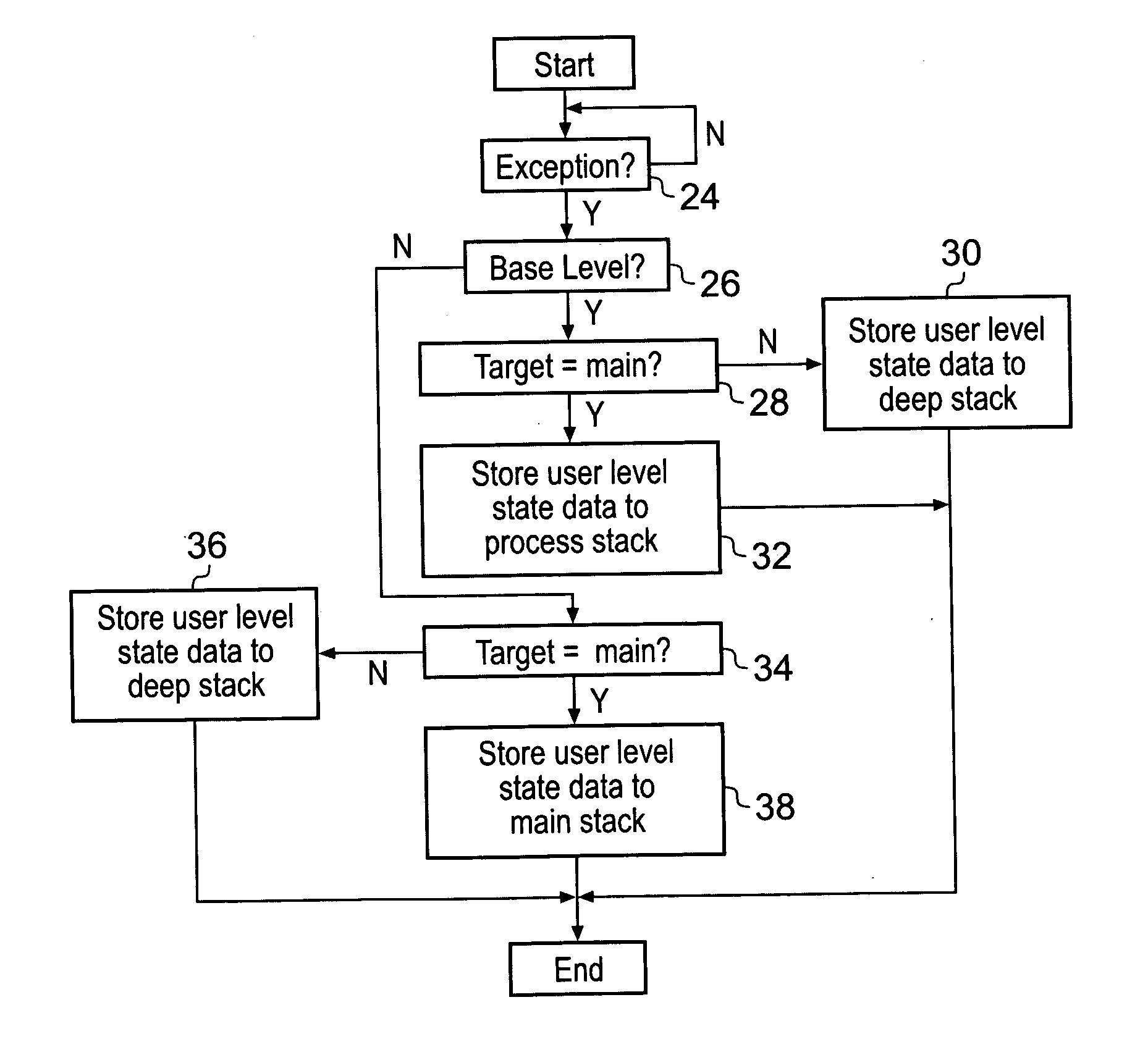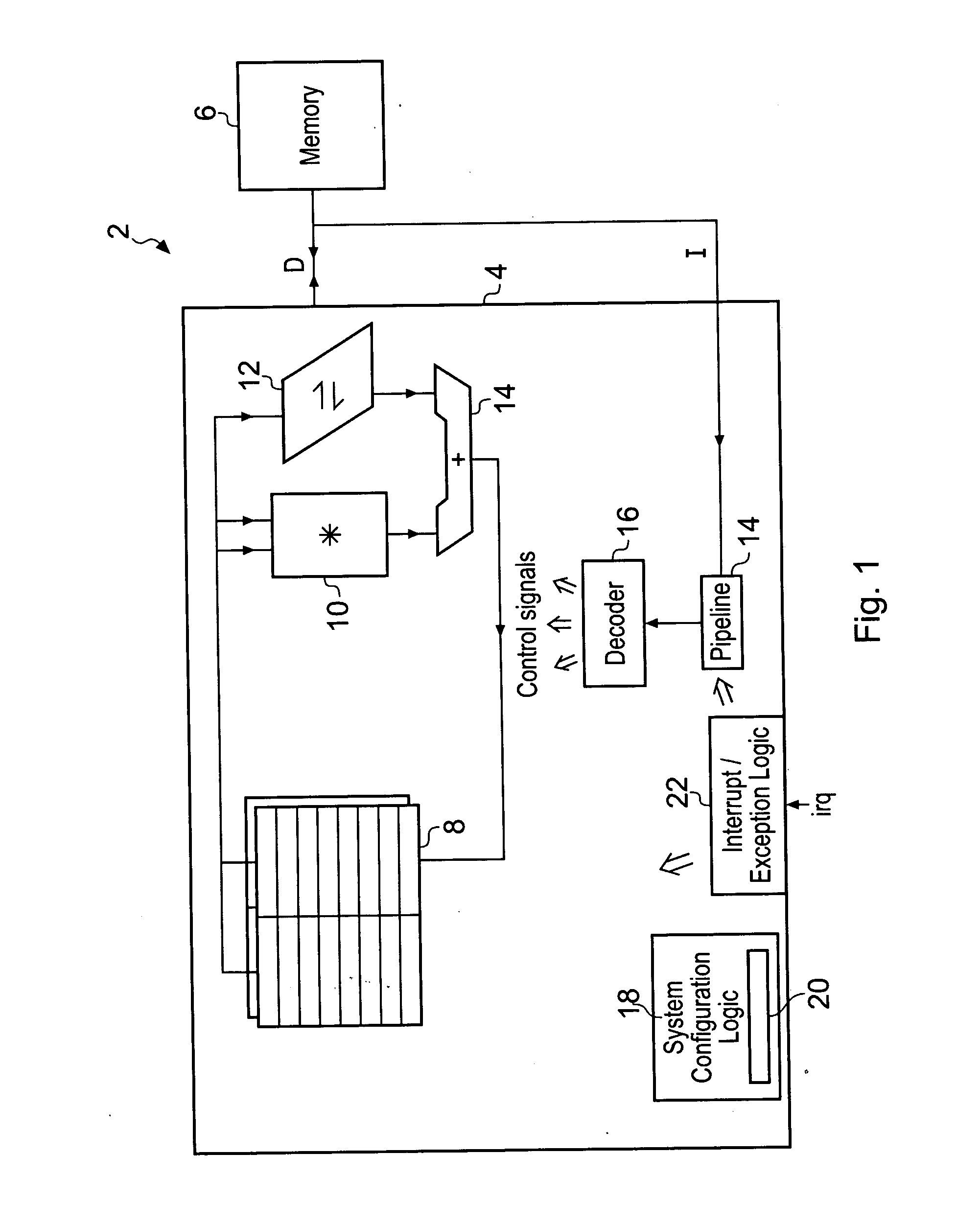Stack memory selection upon exception in a data processing system
a data processing system and exception technology, applied in the field of data processing systems, can solve the problems of critical time taken to switch between processing tasks, and achieve the effect of reducing the likelihood of loop conditions
- Summary
- Abstract
- Description
- Claims
- Application Information
AI Technical Summary
Benefits of technology
Problems solved by technology
Method used
Image
Examples
Embodiment Construction
[0056]FIG. 1 illustrates a data processing system 2 having a processor 4 coupled to a memory 6. The memory 6 stores program instructions for controlling the processor 4 as well data values to be manipulated by the processor 4. The processor 4 includes, for example, a register bank 8, a multiplier 10, a shifter 12 and an adder 14. Data values are read from the register bank 8 manipulated by one or more of the multiplier 8, the shifter 12 and the adder 14 and result values returned to the register bank 8. Instructions I fetched from the memory 6 enter an instruction pipeline 14 along which they progress until they reach a decode state at which stage decode logic 16 serves to generate control signals to configure and control the register file 8, the multiplier 10, the shifter 12 and the adder 14 to perform the desired processing operations. It will be appreciated that the illustration of FIG. 1 is highly simplified and that in practice a processor 4 will typically include many further ...
PUM
 Login to View More
Login to View More Abstract
Description
Claims
Application Information
 Login to View More
Login to View More - R&D
- Intellectual Property
- Life Sciences
- Materials
- Tech Scout
- Unparalleled Data Quality
- Higher Quality Content
- 60% Fewer Hallucinations
Browse by: Latest US Patents, China's latest patents, Technical Efficacy Thesaurus, Application Domain, Technology Topic, Popular Technical Reports.
© 2025 PatSnap. All rights reserved.Legal|Privacy policy|Modern Slavery Act Transparency Statement|Sitemap|About US| Contact US: help@patsnap.com



